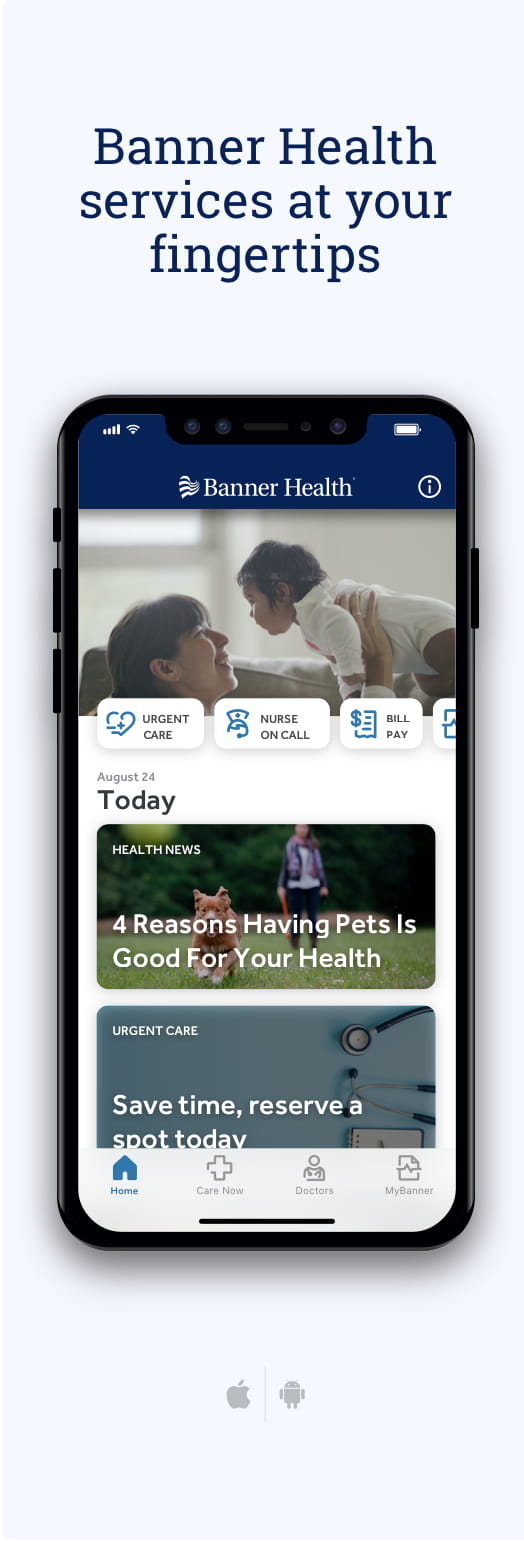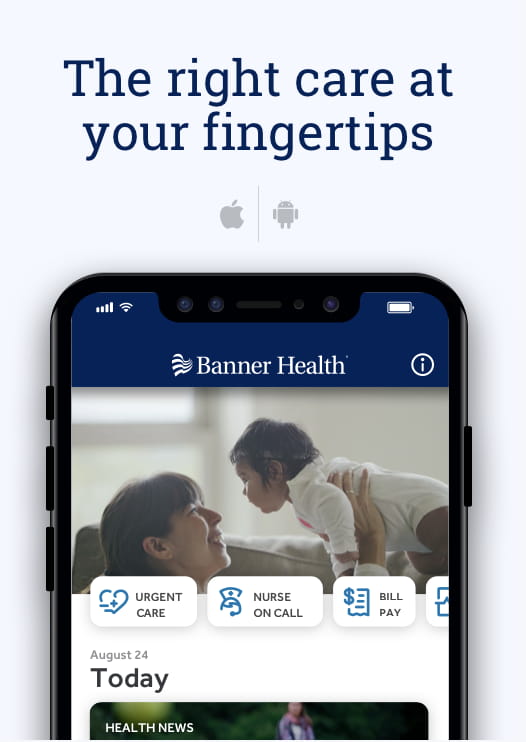If your child has a developmental delay or disability, you want to make sure they have the opportunities they need to succeed. That includes making sure they get the support they need at school.
Two types of plans, individualized education plans (IEPs) and 504 plans are designed to give children the services they need to learn alongside their peers.
What is an IEP?
“An IEP is a plan to ensure that a student who has a qualifying disability receives special education services so they can make progress in the general curriculum,” said Judy Subaitis, principal at Banner Academy.
An IEP is developed to help children with learning challenges get tailored academic, developmental, social and emotional support. They are designed so all children get the same opportunities, regardless of any disabilities.
An IEP is a legal document that may include special education, accommodations, modifications and support services your child needs at school. Essentially, this plan is a contract between you and the school.
Public schools and charter schools are required by law to work with you to develop an IEP. Private schools are not covered, but they may have alternatives.
“Private schools can offer special education services, but they are not required to. Some private schools may offer an ISP (Individual Service Plan) but depending on the private school the special education services offered may be less than what would be offered at the public school,” Subaitis said.
Colleges and universities do not use IEPs but will typically provide accommodations upon request.
To see if your child qualifies for an IEP, a team will identify your child’s strengths, challenges and needs. They will evaluate your child’s diagnosis and how their condition impacts their ability to learn and participate in school.
If they are eligible, an IEP team will create a plan. The team may include parents, teachers, school specialists and sometimes the student. The plan includes accommodations and modifications that help your child meet their academic, social and emotional needs.
“Parents are, by law, equal members of their child’s IEP team,” Subaitis said. “Parents play an important role in deciding which services their child will receive, and the school cannot change the IEP without allowing the parent to challenge the changes.”
Accommodations might include:
- Extra time to take tests or finish assignments
- Assistive technology
- Small group instruction
- Modified assignments or curriculum
- Speech and/or occupational therapy
- Instructional strategies or supports
- Counseling
- Behavioral interventions
IEPs need to be reviewed and revised every 364 days. You’ll also get progress reports throughout the school year and you can request additional IEP meetings during the year.
What is a 504 plan?
Section 504 of the Rehabilitation Act gives students equal access in school and ensures that schools that get federal funding can’t discriminate against people with disabilities. It’s designed to level the playing field for children who have challenges but don’t need special services.
“504 plans are generally put in place for students who have a permanent or recurring physical or mental disability who do not require special education services,” Subaitis said. Section 504 requires that your child has a physical or mental impairment, like a medical problem or a learning disability, that limits at least one major life activity.
The main difference between an IEP and a 504 is that a 504 plan may include changes to the learning setting, teaching methods or additional support, but not specialized education services.
Generally, 504 plans are set up when a child needs accommodations to give them access to education because of a health condition, such as diabetes, dyslexia or a mental health issue. They typically need a doctor’s note.
Common accommodations under a 504 plan may include:
- Extra time on tests or assignments
- Ability to carry and use medical equipment, such as glucose testing equipment for children with diabetes
- Changes to seating arrangements, such as sitting in the front of the classroom
- Assistive technology
- Written instructions
- Audiobooks
- Breaks during the school day
“Like IEPs, 504 plans should also be updated every year to ensure the student is receiving the most effective accommodations for their circumstances,” Subaitis said.
Does your child need extra support?
The first step in deciding whether an IEP or 504 could help your child is to look for signs they might need some help. Watch for:
- Struggles to keep up with grade-level work or completing assignments.
- Changes in behavior, such as being more frustrated, not being engaged in school or not wanting to go to school.
- Social issues, such as trouble making or keeping friends or isolating themselves.
- Not making progress in the classroom.
- Anything that may concern you as a parent or guardian.
While a diagnosis alone may not qualify your child for support, your child may need extra help if they have been diagnosed with:
- Attention deficit hyperactivity disorder (ADHD)
- Autism
- Learning disabilities
- Obsessive-compulsive disorder
- Oppositional defiant disorder
- Sensory processing disorder
- Speech delays
- Vision or hearing problems
What to do if you have concerns
Talk to your child’s teachers and school staff if you’re noticing signs that your child might be struggling. Share what you’ve seen and be honest about your insights and concerns. Ask them what they’ve noticed about your child’s performance and behavior.
If you need to, you (or your child’s teacher) can ask for a formal evaluation to see if your child qualifies for an IEP or a 504 plan. You’ll usually need to send your request in writing to either the school principal or the special education coordinator.
“Not all students who have disabilities require specialized instruction. A series of steps determines whether a student qualifies for special education services,” Subaitis said.
The school will perform a detailed assessment that could include standardized tests, classroom observations and input from professionals. “That information will help show your child’s strengths and challenges and determine whether they have a disability that requires special education services,” Subaitis said.
What happens in IEP or 504 meetings
At IEP or 504 meetings, parents, teachers, specialists and sometimes the student come together to discuss and plan the accommodations and modifications. These meetings often include a lot of information and can take an hour or an hour and a half, especially the first time.
It’s important for you to:
- Share insights into your child’s strengths, challenges and preferences.
- Work with the team to set realistic, meaningful goals for your child.
- Ask any questions you have and share your concerns.
- Review your child’s progress and work with the team to adjust the plan.
The meetings often identify:
- How well your child is performing in school
- Factors that are influencing their progress
- Goals
- Accommodations
- Needs for assessment by the state, district or classroom
- Transition plans that begin in high school or by the time a student turns 16
After the meeting, you should have a document that everyone agrees on, and that covers all the decisions made during the meeting, as well as those that were rejected.
Tips for supporting your child
Here are some steps you can take:
- Make sure you understand what your child needs and what’s included in the plan.
- Actively listen to the experts involved in your child’s education.
- Ask questions and make sure experts clarify any terms you don’t understand.
- Approach discussions with mutual respect.
- Communicate openly and work together outside of regular meetings.
- Advocate for your child, so their needs and strengths are always considered.
- Work with the team to tackle challenges that may arise.
- Monitor your child’s progress.
- Review annual goals to make sure they are still right for your child.
- Be open to adjustments as your child changes as they progress in school.
- Ask what you can do at home to support your child’s education.
- Encourage your child to advocate for themselves.
What your child can do
Depending on your child’s age, challenges and abilities, they can participate in IEP or 504 meetings. This will help them learn to advocate for themselves and be more independent and resilient. You can help by:
- Teaching them self-awareness so they understand their strengths, challenges and accommodations.
- Encouraging them to express their needs, preferences and challenges with teachers and peers.
- Helping them build problem-solving skills, so they can tackle challenges and get help when they need it.
- Building their confidence so they can speak up and ask for what they need.
Connecting with resources
When you’re getting support for your child, you don’t have to go at it alone. Here are some places where you can get help:
- Special education services at your child’s school, such as speech therapy, counseling or academic support.
- Inclusive classrooms at your child’s school.
- Collaboration with teachers.
- Local advocacy groups that support students with disabilities and may offer resources, parent workshops and networking opportunities.
- Online communities where parents share experiences and advice.
- Professional associations related to your child’s specific needs or condition, which may provide educational materials, conferences and access to experts.
The bottom line
If your child has a delay, disability or health problem, they may be eligible for special education services. Two different plans, IEPs and 504s, help ensure that children who qualify get the support they need to succeed at school.
If you have any concerns about your child’s health or development, you can reach out to an expert at Banner Health for help.


